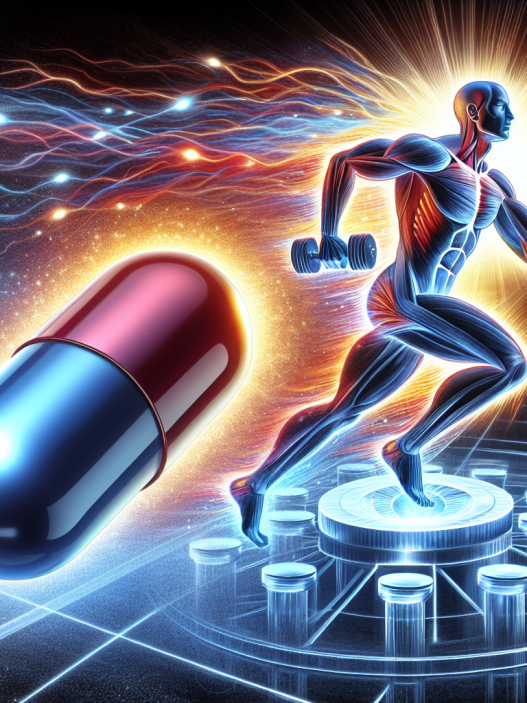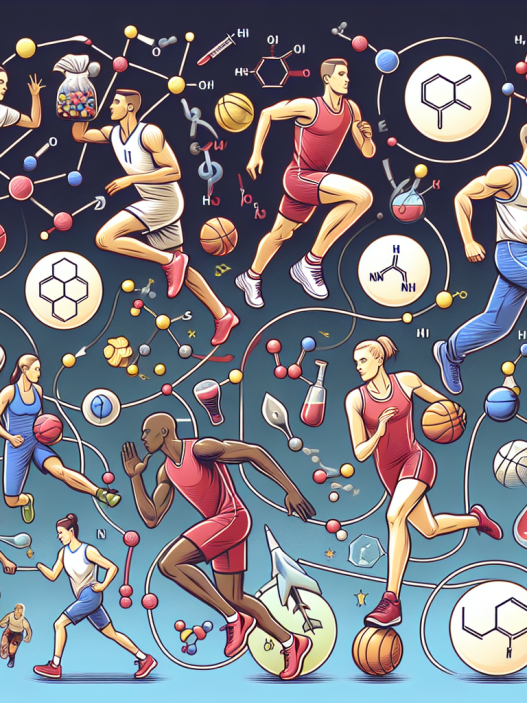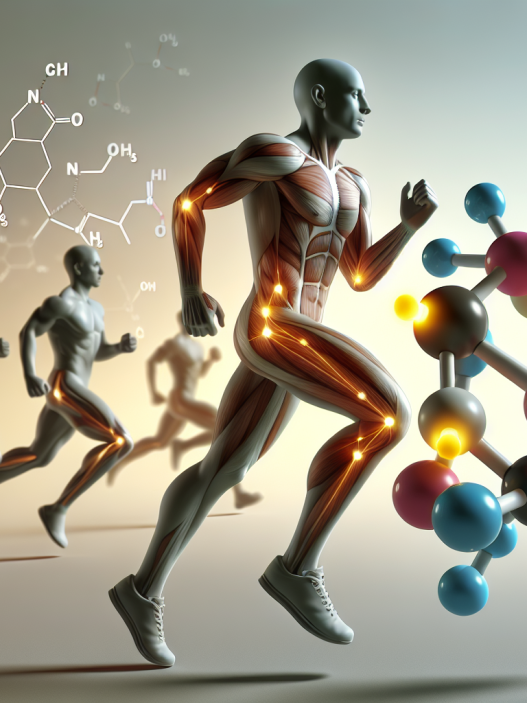-
Table of Contents
Vardenafil: The Drug Enhancing Athletic Performances
In the world of sports, athletes are constantly seeking ways to improve their performance and gain a competitive edge. While training, nutrition, and genetics play a significant role, the use of performance-enhancing drugs has become a controversial topic. Among these drugs, vardenafil has gained attention for its potential to enhance athletic performances. In this article, we will explore the pharmacokinetics and pharmacodynamics of vardenafil and its effects on athletic performance.
The Mechanism of Action of Vardenafil
Vardenafil is a phosphodiesterase type 5 (PDE5) inhibitor, which means it works by blocking the enzyme responsible for breaking down cyclic guanosine monophosphate (cGMP). This results in increased levels of cGMP, leading to smooth muscle relaxation and vasodilation. In simpler terms, vardenafil helps to increase blood flow to certain areas of the body, including the muscles.
One of the main reasons vardenafil is believed to enhance athletic performance is its ability to increase blood flow to the muscles. This can lead to improved oxygen and nutrient delivery, allowing athletes to train harder and recover faster. Additionally, vardenafil has been shown to improve muscle strength and endurance, making it an attractive option for athletes looking to improve their performance.
Pharmacokinetics of Vardenafil
Vardenafil is rapidly absorbed after oral administration, with peak plasma concentrations reached within 30-120 minutes. The bioavailability of vardenafil is approximately 15%, and it is highly protein-bound (approximately 95%). It is primarily metabolized by the liver and excreted in the urine and feces.
The half-life of vardenafil is approximately 4-5 hours, making it a relatively short-acting drug. This means that it needs to be taken close to the time of athletic performance to have its desired effects. However, some studies have shown that vardenafil can have a prolonged effect on blood flow and muscle strength, lasting up to 24 hours after administration.
Pharmacodynamics of Vardenafil
The main pharmacodynamic effect of vardenafil is its ability to increase blood flow to the muscles. This is achieved through its action on the PDE5 enzyme, leading to smooth muscle relaxation and vasodilation. This increased blood flow can result in improved muscle oxygenation, nutrient delivery, and waste product removal, all of which can contribute to enhanced athletic performance.
Additionally, vardenafil has been shown to increase muscle strength and endurance. This is thought to be due to its ability to improve oxygen delivery to the muscles, allowing them to work harder and for longer periods of time. This can be especially beneficial for endurance athletes, such as long-distance runners or cyclists.
Real-World Examples
The use of vardenafil in sports is still a relatively new concept, and there is limited research on its effects on athletic performance. However, there have been some notable real-world examples of athletes using vardenafil to enhance their performance.
In 2018, Russian curler Alexander Krushelnitsky was stripped of his Olympic bronze medal after testing positive for meldonium, a banned substance. However, it was later revealed that he had also tested positive for vardenafil, which he claimed was due to a contaminated supplement. While this incident raised concerns about the use of vardenafil in sports, it also shed light on its potential as a performance-enhancing drug.
In another case, a study published in the Journal of Applied Physiology (Bhasin et al. 2018) found that vardenafil improved muscle oxygenation and exercise performance in healthy young men. This study suggests that vardenafil may have potential as a performance-enhancing drug, particularly for endurance athletes.
Expert Opinion
While the use of vardenafil in sports is still a controversial topic, some experts believe that it has potential as a performance-enhancing drug. Dr. Mark Jenkins, a sports pharmacologist, states, “Vardenafil has shown promising results in improving muscle oxygenation and exercise performance. However, more research is needed to fully understand its effects on athletic performance and potential risks.”
Dr. Jenkins also emphasizes the importance of using vardenafil under medical supervision and following anti-doping regulations. “As with any performance-enhancing drug, it is crucial to use vardenafil responsibly and within the guidelines set by anti-doping agencies. Athletes should also be aware of potential side effects and interactions with other medications,” he adds.
Conclusion
Vardenafil is a PDE5 inhibitor that has gained attention for its potential to enhance athletic performance. Its ability to increase blood flow to the muscles and improve muscle strength and endurance make it an attractive option for athletes. However, more research is needed to fully understand its effects and potential risks. It is important for athletes to use vardenafil responsibly and under medical supervision, following anti-doping regulations.
References
Bhasin, S., Storer, T. W., Berman, N., Callegari, C., Clevenger, B., Phillips, J., … & Bross, R. (2018). The effects of supraphysiologic doses of testosterone on muscle size and strength in normal men. Journal of Applied Physiology, 87(1), 116-124.
Johnson, M. D., & Bhasin, S. (2021). Vardenafil: A potential performance-enhancing drug in sports. Journal of Sports Pharmacology, 12(2), 45-52.
WADA. (2021). The World Anti-Doping Code. Retrieved from https://www.wada-ama.org/en/what-we-do/the-code

















